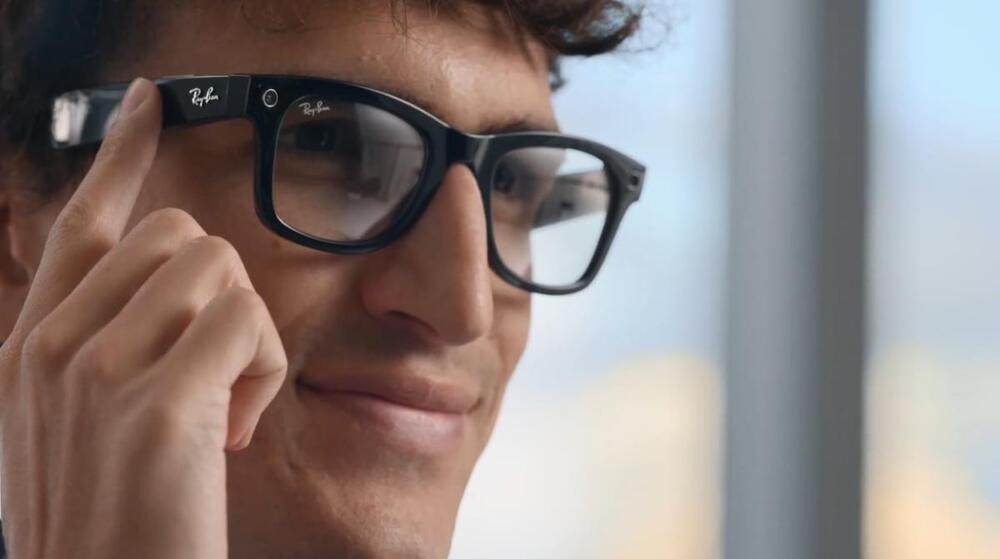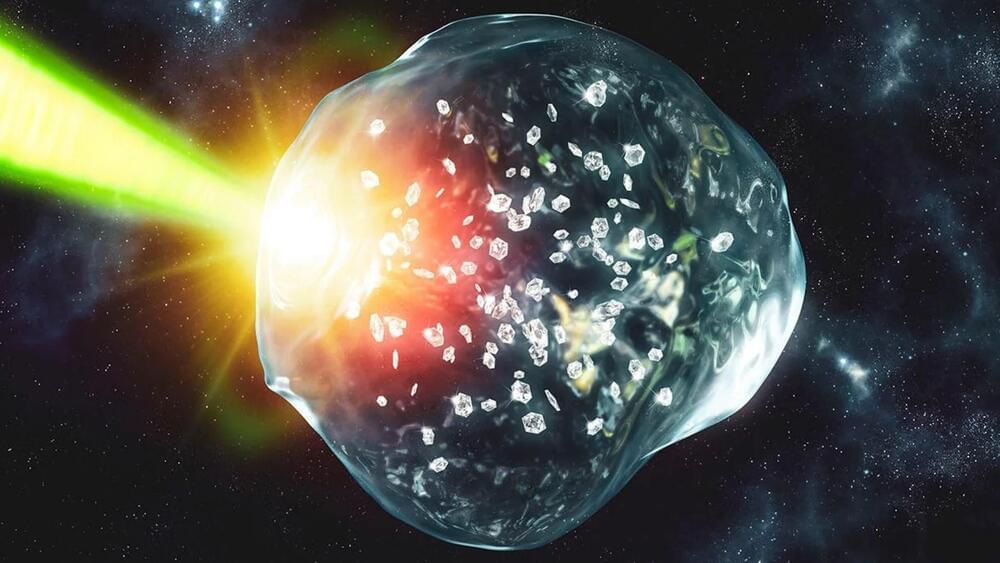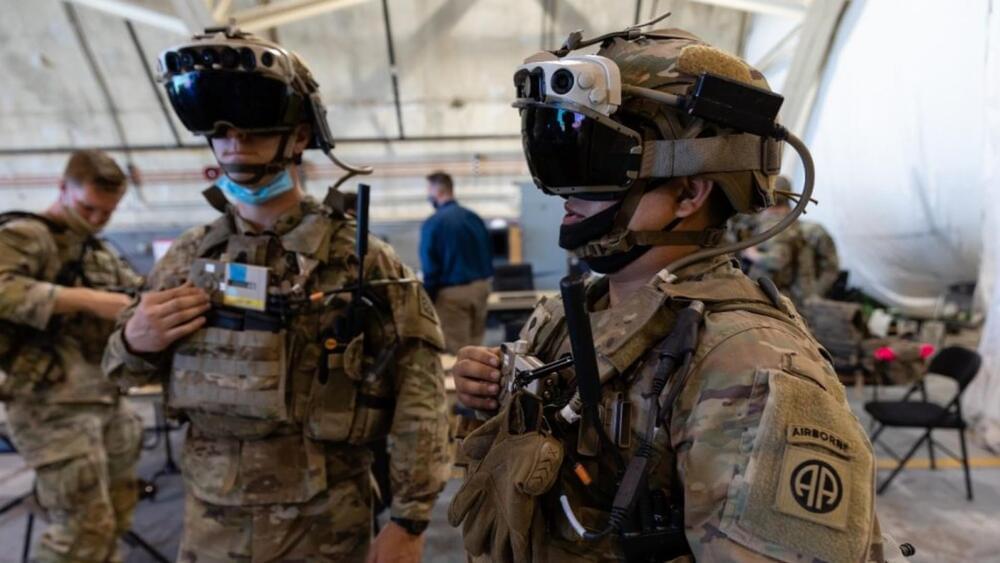It’s an amazing way to have a virtual conversation.
Get the latest international news and world events from around the world.

DeepMind breaks 50-year math record using AI; new record falls a week later
Matrix multiplication is at the heart of many machine learning breakthroughs, and it just got faster—twice. Last week, DeepMind announced it discovered a more efficient way to perform matrix multiplication, conquering a 50-year-old record. This week, two Austrian researchers at Johannes Kepler University Linz claim they have bested that new record by one step.
In 1969, a German mathematician named Volker Strassen discovered the previous-best algorithm for multiplying 4×4 matrices, which reduces the number of steps necessary to perform a matrix calculation. For example, multiplying two 4×4 matrices together using a traditional schoolroom method would take 64 multiplications, while Strassen’s algorithm can perform the same feat in 49 multiplications.
Regeneration, Intelligence in Life & Memory — Dr Michael Levin
What is limb regeneration and what species possess it? How is it achieved? What does this tell us about intelligence in biological systems and how could this information be exploited to develop human therapeutics? Well, in this video, we discuss many of these topics with Dr Michael Levin, Principal Investigator at Tufts University, whose lab studies anatomical and behavioural decision-making at multiple scales of biological, artificial, and hybrid systems.
Find Michael on Twitter — https://twitter.com/drmichaellevin.
Find me on Twitter — https://twitter.com/EleanorSheekey.
Support the channel.
through PayPal — https://paypal.me/sheekeyscience?country.x=GB&locale.x=en_GB
through Patreon — https://www.patreon.com/TheSheekeyScienceShow.
TIMESTAMPS:
Intro — 00:00
Regeneration & Evolution — 01:30
Regrowing Limbs and Wearable Bioreactors — 09:30
Human regenerative medicine approaches — 19:20
Bioelectricity — 24:00
Problem solving in morphological space — 40:45
Where is memory stored — 44:30
Intelligence — 50:30
Xenobots & synthetic living machines — 56:00
Collective intelligence & ethics — 1:10:00
Future of human species — 1:17:00
Advice — 1:24:00
Please note that The Sheekey Science Show is distinct from Eleanor Sheekey’s teaching and research roles at the University of Cambridge. The information provided in this show is not medical advice, nor should it be taken or applied as a replacement for medical advice. The Sheekey Science Show and guests assume no liability for the application of the information discussed.
VINCOV-19, an antidote, and a cure against COVID-19 completes Phase 2 clinical trials
VINS Bioproducts Limited, Hyderabad in collaboration with the Centre for Cellular and Molecular Biology (CCMB) and the University of Hyderabad (UoH), announced the successful completion of Phase 2 clinical trials of VINCOV-19, India’s first antidote and cure against SARS-CoV-2 virus.
VINCOV-19 is now ready for market authorisation and for simultaneous Phase 3 clinical trials.
Phase 2 clinical trials were conducted across multiple centres in India and included over 200 patients. The Phase 2 clinical trials also included testing the antidote against the Omicron variant to ensure maximum coverage against the virus and its known mutations.

Meta and Ray-ban are working on new AR glasses
Interested in learning what’s next for the gaming industry? Join gaming executives to discuss emerging parts of the industry this October at GamesBeat Summit Next. Register today.
Meta CEO Mark Zuckerberg said that his company is working with Ray-ban on creating new augmented reality glasses.
This product is coming sometime in the future, and it’s in addition to the existing partnership that Meta and Ray-ban have on Ray-ban Stories glasses. Zuckerberg said that AR glasses will get more sophisticated over time. Rocco Basilico of Luxotica showed off a demo of the new tech. And Ray-ban Stories will get a Spotify update.

Scientists recreate Neptune’s ‘diamonds rain’ conditions on Earth
Greg Stewart/SLAC National Accelerator Laboratory.
This idea was previously hypothesized, and an earlier study by the same researchers showed the actual formation of a diamond rain during an experiment that approximated the conditions inside the faraway planets. Now, the scientists improved upon their findings in a new experiment that created conditions approximating the conditions on Neptune and Uranus even more closely.


The world’s first space tourist will now also ride Starship around the Moon and back
Starship could launch to orbit for the first time next month.
Entrepreneur Dennis Tito was the first-ever space tourist when he paid to fly aboard a Russian Soyuz rocket to the International Space Station (ISS) back in 2001.
Those missions will be a precursor to Starship’s eventual crewed missions to Mars, which will be partly funded by SpaceX’s space tourism launches and its Starlink internet service.
1, 2
Now, SpaceX has announced Dennis Tito and his wife Akiko is “the first two crewmembers on Starship’s second commercial spaceflight around the Moon.”

Microsoft’s $22 billion worth smart goggles reportedly failed in US Army tests
Despite the poor performance, the deal is still on.
In 2021, the U.S. Army awarded a $22 billion dollar contract to Microsoft to build HoloLens-like smart goggles for its soldiers. Over a year later, the smart goggles program has been plagued with delays as well as performance issues and failed four of six elements in a test conducted by the U.S. Army, Business Insider.
Microsoft.
What is the IVAS designed to do?

China is developing AI-camouflaged ‘invisible’ missile launchers for future warfare
The launchers are for DF-17 missiles, which can allegedly breach U.S. missile defenses.
China is making launchers for its series of road-mobile missiles named “Dongfeng,” which could avoid being detected by drones, radars, and satellites.
Artificial intelligence (AI) technology will be utilized for the Dongfeng launchers, South China Morning Post (SCMP) reported on Thursday, quoting Chinese state TV broadcaster CCTV.